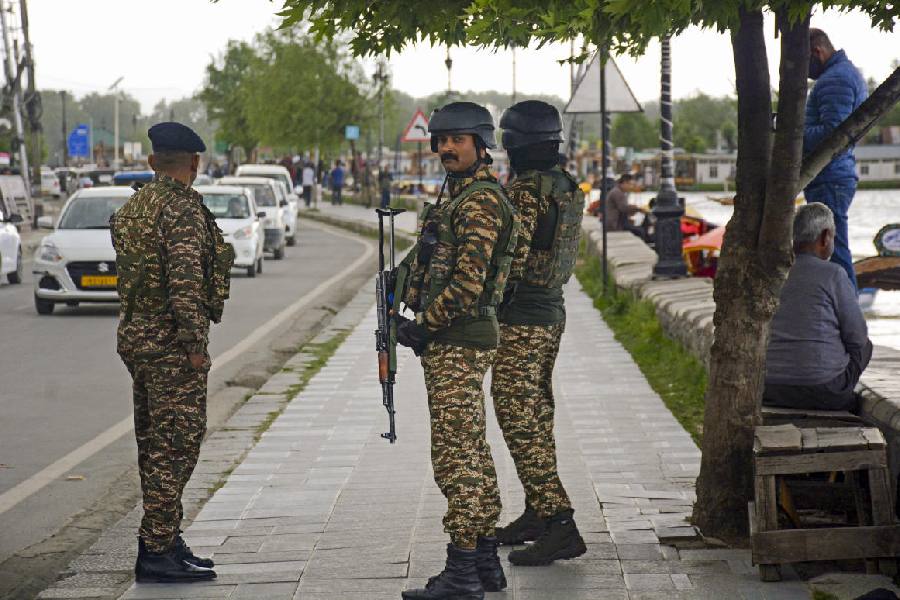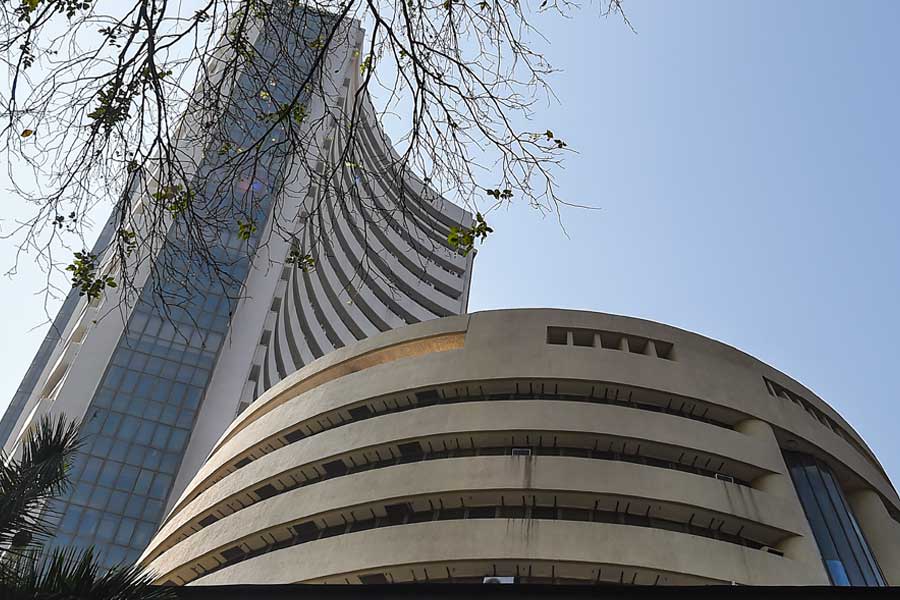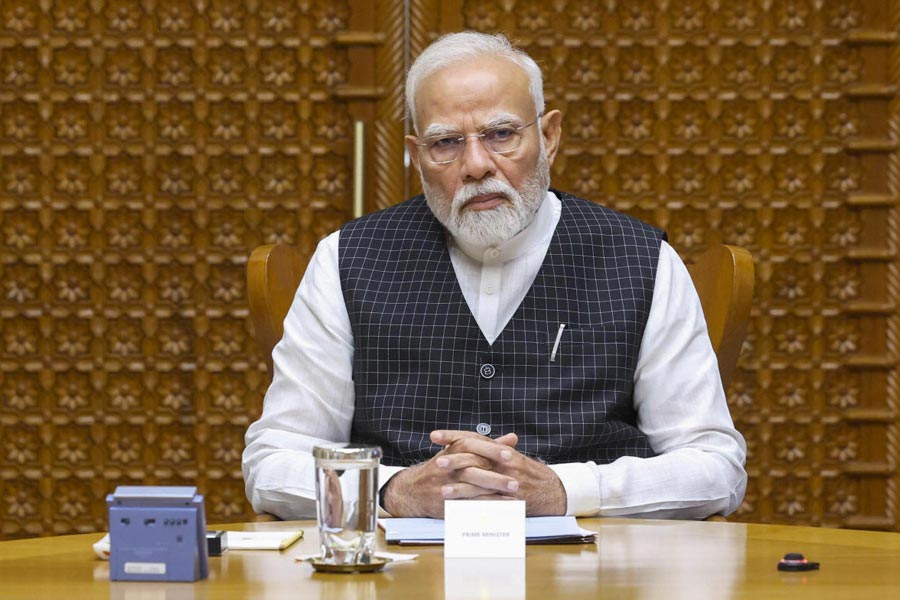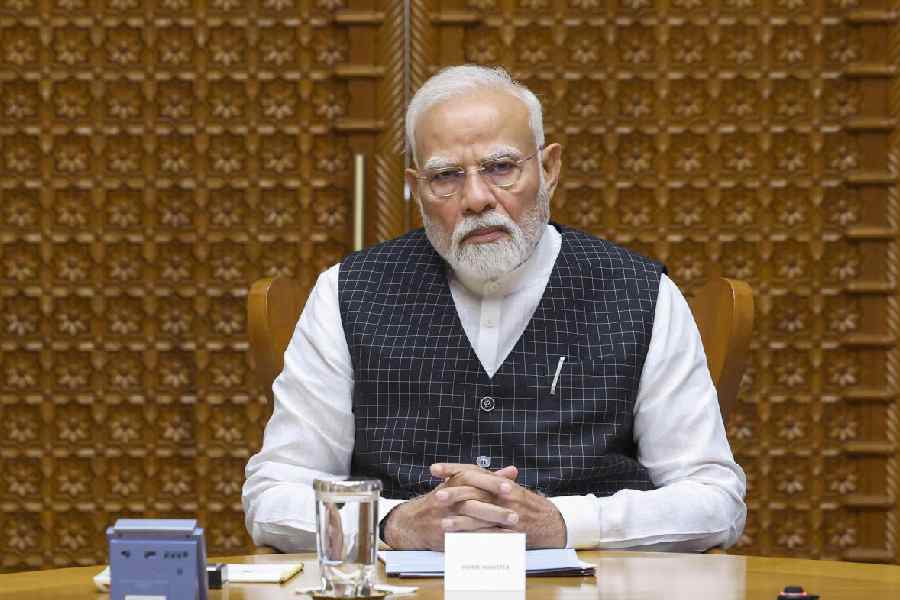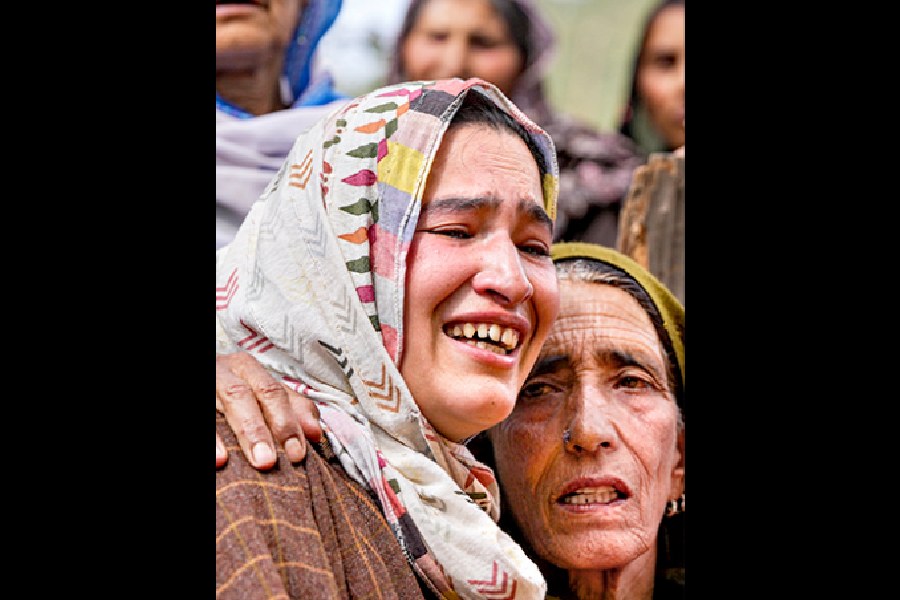 |
| Balancing act: Dr Anand Sinha at his workstation. Picture by Manik Bose |
At exactly the appointed time, 8.30 sharp in the morning, I was at Dr Anand Sinha’s bungalow at Karam Toli Chowk, Ranchi. I had known him for many years, but today I was not here to meet Sinha, the doctor. There is another aspect of him which I think people should be introduced to — his passion for music — something around which his life revolves, as I discovered during the next few hours I spent with him.
As we settled down in his study with coffee, I think he expected me to begin with questions on music. But I was curious about his childhood, convinced it must have been exciting, and I was not wrong.
“The first eight years of my life was spent in London. As my father, the late Beohar R. Sinha had to be in England for his training in ocular surgery, my entire family moved there. There I spoke English, befriended English boys and learnt English mannerisms,” he began.
To my question as to how exactly did he fall in love with music in that anglicised atmosphere, he laughed. “Singing and music were innate to me. I clearly remember how at Avenue School, London, my primary Alma Mater, I was chosen for the school choir consisting of six pupils, from among hundreds of students,” he said, smiling at my surprised look.
A child whose first introduction to music was through Do-Re-Me took to Indian music quite easily later. “It was during one of those countdown programs on radio Ceylon that I first heard the song titled Jo vada kiya woh nibhana padega. The number engrossed me so much, I kept humming the tune for almost 24 hours. Although Hindi was unintelligible to me at that time, this song was etched in my mind,” he said. Probably, this was the way it was meant to be.
The year was 1961, when on the call of Pandit Nehru, Anand’s family returned to India, and they settled down in the then rural Ranchi, where his father began his practice. And which is when Anand’s own training to be an ophthalmologist began. Now a noted eye surgeon in the city, Anand was just a schoolboy when he started accompanying his father when he went on his rounds. “My father would visit patients in the interiors of the state and I would go along with him,” he recalled.
And music? “Music was always there, part of everything,” he said. A look at his unique music laboratory reveals amazing secrets. Apart from an impressive collection of around two lakh songs, comprising of ghazals, thumris, as well as filmi numbers stored in innumerable CDs, I learnt with wonder that he has, in his collection, all the recordings of Sangeet sarita, an evergreen programme of classical music on Vividh Bharti. “In my lab I had been converting all the songs into the digital format. This process includes enhancing the sound quality without any distortion with the original music,” he explained.
While in Delhi for his post-graduation in medicine at AIIMS, Anand attended the live performances of almost every classical and ghazal artist of that era. This included shows of Ghulam Ali Khan, Begum Akhtar, Shobha Gurtu and Girija Devi, among others.
I ask him how would he differentiate the two schools of music — eastern and western — and wait, eager to know the answer from someone who has has devoted so much time pursuing both. I suddenly answer it myself, much to his amusement. Leaving me much flattered he calls my argument brilliant. My point had been that in India we have music for every occasion, be it birth, marriage or death. But this was not the case in western music.
Next we moved on to his beliefs about music. Passionate about the voice of Rafi, Anand reveals to me the mysterious ways in which music affects our system. Being unaware of these concepts, I was truly amazed by what he had to say. He begins by quoting an incident from his own life.
“In 1990, I was detected with an infection called Hepatitis-C. It reached such critical proportions that medicines failed and doctors said that liver transplantation was the only remedy. It was then that I decided to use the concept of music therapy. I stopped taking all medicines and regularly listened to Rag Bhairavi for 40 minutes each day. Within 15 days the disease vanished and I am hale and hearty till today,” he said. Obviously, I was both curious and amazed. Perhaps, sensing it, Anand dug out a list of ragas prescribed for the cure of various diseases. “First, music gives positive energy. Second, listening to music of all eight pahars, Ahir Bhairav in the morning, Rag Lalit during the day, Rag Marwah at sunset and Rag Yaman at night, has curative effect,” he explained. He quoted from history the example of saint Thyagraj, a musician, who brought a dead man to life through the force of ragas.
I don’t know how long we had been conversing, when he took me to his drawing room, where I was startled to see the antique spool tape recorder, gramophone and National Eco Radio set — all in working condition! As I left he promised me a DVD of his favourite songs. The morning couldn’t have ended more perfectly.


